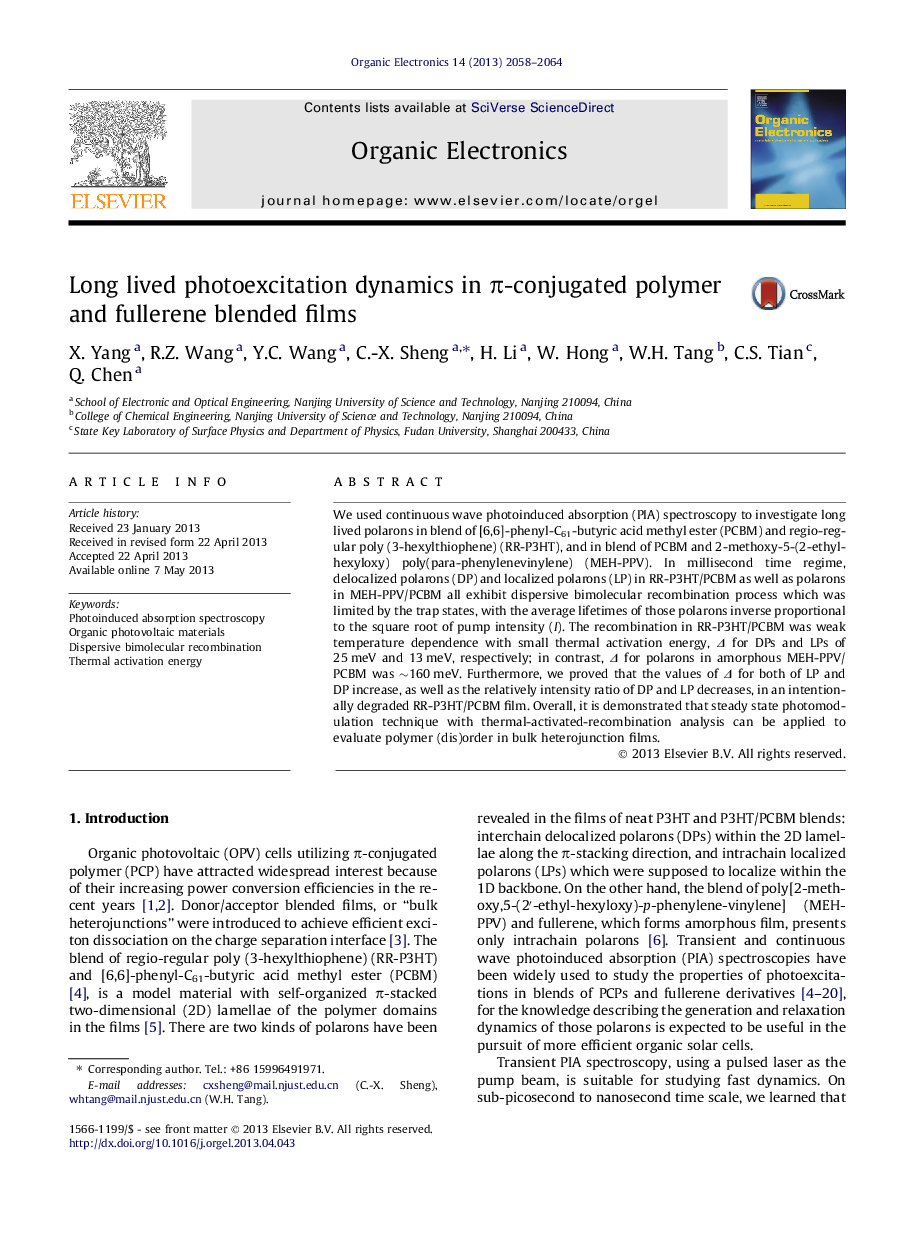| Article ID | Journal | Published Year | Pages | File Type |
|---|---|---|---|---|
| 1265224 | Organic Electronics | 2013 | 7 Pages |
•Polarons exhibit dispersive bimolecular recombination process.•All kinds of polarons are trapped in millisecond time regime.•Recombination of polarons in RR-P3HT/PCBM is weak temperature dependence.•Thermal activation energy for recombination is sensitive to film morphology.
We used continuous wave photoinduced absorption (PIA) spectroscopy to investigate long lived polarons in blend of [6,6]-phenyl-C61-butyric acid methyl ester (PCBM) and regio-regular poly (3-hexylthiophene) (RR-P3HT), and in blend of PCBM and 2-methoxy-5-(2-ethylhexyloxy) poly(para-phenylenevinylene) (MEH-PPV). In millisecond time regime, delocalized polarons (DP) and localized polarons (LP) in RR-P3HT/PCBM as well as polarons in MEH-PPV/PCBM all exhibit dispersive bimolecular recombination process which was limited by the trap states, with the average lifetimes of those polarons inverse proportional to the square root of pump intensity (I). The recombination in RR-P3HT/PCBM was weak temperature dependence with small thermal activation energy, Δ for DPs and LPs of 25 meV and 13 meV, respectively; in contrast, Δ for polarons in amorphous MEH-PPV/PCBM was ∼160 meV. Furthermore, we proved that the values of Δ for both of LP and DP increase, as well as the relatively intensity ratio of DP and LP decreases, in an intentionally degraded RR-P3HT/PCBM film. Overall, it is demonstrated that steady state photomodulation technique with thermal-activated-recombination analysis can be applied to evaluate polymer (dis)order in bulk heterojunction films.
Graphical abstractFigure optionsDownload full-size imageDownload as PowerPoint slide
